
Duchesse (Duchesse satin) was a soft, heavy, and glossy satin cloth made in France.

Duchesse (Duchesse satin) was a soft, heavy, and glossy satin cloth made in France.
Duchesse was produced with a satin weave with fine silk threads using a higher number of threads per square inch in the warp with at least seven floating yarns. The actual material was silk only but increasingly made with synthetic fibers also. [1] [2] [3] [4]
Duchesse satin is valued for its richness and heavy weight. It is used mainly for bridal gowns. [1] [5] The dress worn by Sarah Ferguson for her wedding to Prince Andrew, Duke of York on 23 July 1986 at Westminster Abbey, was made from ivory duchesse satin and featured heavy beading. [6] The gown worn by Queen Silvia of Sweden for her marriage with Carl XVI Gustaf in 1976 was also made of duchesse satin. [7]

Black tie is a semi-formal Western dress code for evening events, originating in British and American conventions for attire in the 19th century. In British English, the dress code is often referred to synecdochically by its principal element for men, the dinner suit or dinner jacket. In American English the equivalent term tuxedo is common. The dinner suit is a black, midnight blue or white two- or three-piece suit, distinguished by satin or grosgrain jacket lapels and similar stripes along the outseam of the trousers. It is worn with a white dress shirt with standing or turndown collar and link cuffs, a black bow tie, typically an evening waistcoat or a cummerbund, and black patent leather dress shoes or court pumps. Accessories may include a semi-formal homburg, bowler, or boater hat. For women, an evening gown or other fashionable evening attire may be worn.

A satin weave is a type of fabric weave that produces a characteristically glossy, smooth or lustrous material, typically with a glossy top surface and a dull back. It is one of three fundamental types of textile weaves alongside plain weave and twill weave.

A wedding dress or bridal gown is the dress worn by the bride during a wedding ceremony. The color, style and ceremonial importance of the gown can depend on the religion and culture of the wedding participants. In Western cultures and Anglo-Saxon cultural spheres, the wedding dress is most commonly white, a fashion made popular by Queen Victoria when she married in 1840. In Eastern cultures, brides often choose red to symbolize auspiciousness.

A kaftan or caftan is a variant of the robe or tunic. Originating in Asia, it has been worn by a number of cultures around the world for thousands of years. In Russian usage, kaftan instead refers to a style of men's long suit with tight sleeves. Though the kaftan is of ancient Mesopotamian origin, it has been used by many West and Southwest Asian ethnic groups. It may be made of wool, cashmere, silk, or cotton, and may be worn with a sash. Popular during the time of the Ottoman Empire, detailed and elaborately designed garments were given to ambassadors and other important guests at the Topkapı Palace. Variations of the kaftan were inherited by cultures throughout Asia and were worn by individuals in Russia, Southwest Asia and Northern Africa.

1860s fashion in European and European-influenced countries is characterized by extremely full-skirted women's fashions relying on crinolines and hoops and the emergence of "alternative fashions" under the influence of the Artistic Dress movement.

1830s fashion in Western and Western-influenced fashion is characterized by an emphasis on breadth, initially at the shoulder and later in the hips, in contrast to the narrower silhouettes that had predominated between 1800 and 1820.
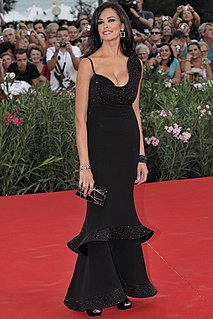
An evening gown, evening dress or gown is a long dress usually worn at formal occasions. The drop ranges from ballerina, tea, to full-length. Such gowns are typically worn with evening gloves. Evening gowns are usually made of luxurious fabrics such as chiffon, velvet, satin, organza, etc. Silk is a popular fibre for many evening gowns. Although the terms are used interchangeably, ball gowns and evening gowns differ in that a ball gown will always have a full skirt and a fitted bodice, while an evening gown can be any silhouette—sheath, mermaid, A-line, or trumpet shaped—and may have straps, halters or even sleeves.

Fashion in the period 1550–1600 in Western European clothing was characterized by increased opulence. Contrasting fabrics, slashes, embroidery, applied trims, and other forms of surface ornamentation remained prominent. The wide silhouette, conical for women with breadth at the hips and broadly square for men with width at the shoulders had reached its peak in the 1530s, and by mid-century a tall, narrow line with a V-lined waist was back in fashion. Sleeves and women's skirts then began to widen again, with emphasis at the shoulder that would continue into the next century. The characteristic garment of the period was the ruff, which began as a modest ruffle attached to the neckband of a shirt or smock and grew into a separate garment of fine linen, trimmed with lace, cutwork or embroidery, and shaped into crisp, precise folds with starch and heated irons.

Fashion in the period 1690–1740 in European and European-influenced countries is characterized by a widening silhouette for both men and women following the tall, narrow look of the 1680s and 90s. This era is defined as late Baroque/Rococo style. The new fashion trends introduced during this era had a greater impact on society, affecting not only royalty and aristocrats, but also middle and even lower classes. Clothing during this time can be characterized by soft pastels, light, airy, and asymmetrical designs, and playful styles. Wigs remained essential for men and women of substance, and were often white; natural hair was powdered to achieve the fashionable look. The costume of the eighteenth century, if lacking in the refinement and grace of earlier times, was distinctly quaint and picturesque.

The dress of the Armenians, also known as Armenian traditional clothing, reflects a rich cultural tradition. Wool and fur were utilized by the Armenians along with the cotton that was grown in the fertile valleys. During the Urartian period, silk imported from China was used by royalty. Later, the Armenians cultivated silkworms and produced their own silk.
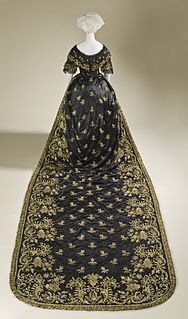
In clothing, a train describes the long back portion of a robe, coat, cloak, skirt, overskirt, or dress that trails behind the wearer.

Ghagra choli,, is a type of ethnic clothing for women from Indian Subcontinent, notably in the Indian states of Rajasthan, Gujarat, Madhya Pradesh, Uttar Pradesh, Bihar, Haryana, Punjab, Himachal Pradesh, Uttarakhand, Jammu and Kashmir, as well as in the Pakistani provinces of Punjab and Sindh. In Punjab, the lehenga is traditionally worn with a kurti. It is a combination of the gagra or lehenga and the choli (blouse), however in contemporary and modern usage lehenga choli is the more popular and widely accepted term by fashion designers, trend setters, and boutiques in South Asia, since ghagra is synonymous with the half-slip worn as an undergarment below the sari.
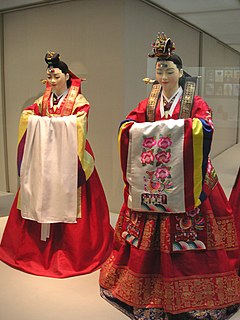
Hwarot is a type of traditional Korean clothing worn during the Goryeo and Joseon Dynasty by only royal women for ceremonial occasions and later by commoners for weddings. It is still worn during the p'yebaek phase of modern weddings. Before commoners wore hwarots, they wore wonsam due to the steep cost of a hwarot. The gown is typically worn with a jokduri or hwagwan, binyeo or daenggi, and yeongigonji, which is red and black makeup spots on the cheek and brow.
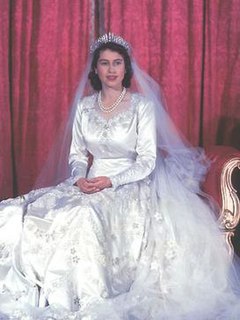
The wedding dress of Princess Elizabeth was worn at her wedding to Philip Mountbatten, Duke of Edinburgh on 20 November 1947 in Westminster Abbey. Given the rationing of clothing at the time, she still had to purchase the material using ration coupons. The dress was designed by Norman Hartnell. Hartnell's signature was said to be embroidery, and he enjoyed "working with soft, floating fabrics, particularly tulle and chiffon, and with plain, lustrous silks". The dress was made of Chinese silk, with a high neckline, tailored bodice and a short train. Without straps and with long sleeves, it provided a "fit and flare silhouette".

Queen Elizabeth II's coronation took place on 2 June 1953. Ordered in October 1952, the gown took eight months of research, design, workmanship, and intricate embroidery to complete. It featured the floral emblems of the countries of the United Kingdom and those of the other states within the Commonwealth of Nations, including the English Tudor rose, Scots thistle, Welsh leek, Irish shamrock, Canadian maple leaf, Australian wattle, New Zealand silver fern, South African protea, Indian lotus flower for India, the Lotus flower of Ceylon, and Pakistan's wheat, cotton, and jute.

The wedding dress of Princess Mary of Teck is the gown worn by the future Queen Mary at her wedding to Prince George, Duke of York on 6 July 1893 at the Chapel Royal, St. James's Palace, in London. The dress now belongs to the British Royal Collection and is part of a collection of royal wedding dresses at Kensington Palace in London.

Queen Victoria of the United Kingdom married Prince Albert of Saxe-Coburg and Gotha on 10 February 1840. She chose to wear a white wedding dress made from heavy silk satin, making her one of the first women to wear white for their wedding. The Honiton lace used for her wedding dress proved an important boost to Devon lace-making. Queen Victoria has been credited with starting the tradition of white weddings and white bridal gowns, although she was not the first royal to be married in white.
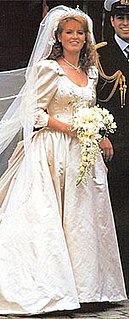
Sarah Ferguson wore a dress made from ivory duchesse satin and featuring heavy beading for her wedding to Prince Andrew, Duke of York on 23 July 1986 at Westminster Abbey. Designed by Lindka Cierach, the beadwork incorporated various symbols including hearts representing romance, anchors and waves representing Prince Andrew's sailing background and bumblebees and thistles, which were taken from Sarah Ferguson's family heraldry. Copies of the dress, including the motifs specific to the royal family, went on sale in stores just hours after the end of the wedding. Influenced by the wedding dress of Lady Diana Spencer, a notable feature of Sarah Ferguson's 17 foot long train was the intertwined initials A and S sewn in silver beads. The head-dress and bouquet, fabric rosettes or artificial silk flowers were used to adorn the gown itself. Ferguson was pleased with the dress, describing it in her 1997 memoir, My Story, as "an exquisite creation I'd lost twenty-six pounds to fit into. Lindka was a genius; I knew she could make the most flattering gown ever, and she had. It was amazingly boned, like a corset." Hair stylist Denise McAdam and make-up artist Teresa Fairminer attended to the bride, while florist Jane Packer designed the bouquet. The ivory silk wedding dress became the season's most sought-after style.
Rena Koh is a Malaysian-born British fashion designer, especially noted for her bridal wear. She is based in Boca Raton, Florida.
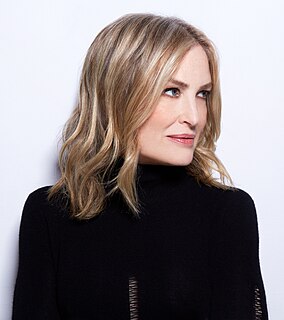
Heidi Weisel was an American fashion designer. She was the founder and head of design for Heidi Weisel, a New York City-based women's luxury brand. Weisel's signature was creating modern, timeless evening wear with the simplicity and ease of sportswear. She was known for her unexpected mix of fabrics, often incorporating knitted cashmere, silk chiffon, silk satin, lace, tulle, and leather. A Heidi Weisel chiffon and lace design is in the permanent collection of the Metropolitan Museum of Art. Weisel was a member of the Council of Fashion Designers of America (CFDA).